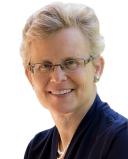Relationships
What Does It Mean to Be Wired for Love?
Personal Perspective: Healthy relationships heal the darkest human violations.
Posted December 1, 2023 Reviewed by Ray Parker
Key points
- Healthy relationships have the power to heal physical and emotional pain.
- Isolation causes real pain.
- Helping others and depending on one another prove we are wired to love.

Personally, it has been a very long year. I have been out on medical leave, having had two septic knees, three major knee surgeries, too many antibiotics, and a ton of downtime to think and feel. My astrologer says it is what is meant to happen—my body insisting that I slow down, shift gears, and find a new, less compulsive path for my passions. I have tried to listen.
One thing that kept popping up in the absence of work was my honest confusion about relationships and how to make sense of them in this increasingly divided and violent world. I don’t pretend to have the answers. But would like to share some basic observations. Perhaps food for thought for others to build on.
There were many times in the isolation of illness that I did not feel “wired for love.” My subjective pain and suffering were so linked to my sympathetic nervous system that I often felt like digging a hole, crawling in, and never coming out. I suspect I am not alone in that feeling. Inevitably, I would come out, and nine times out of ten, it was because one of my dear friends or family members would send me a message over email or text or even visit, and somehow, that would light a spark.
Not a raging blaze but a spark that had the power to ironically douse the fire of isolation and pain burning in my sympathetic nervous system just long enough for me to peek out of my hole and notice that life was still going on around me. Neighbors were walking their dogs, family and friends were gathering for meals and companionship, and it was a way to manage the overwhelming news of emerging wars, the escalation of political discord, and the ominous threat of climate change.
For me, each reemergence felt like a small miracle—a relational balm to break the cycles of pain consuming me. Inevitably, I would go back to my hole. Healing can be like this: A stutter step into health and a retreat back into the relentless energy needed to heal wounds—emotional and physical.
When I finally emerged in September with a newly replaced knee, my first event was to attend a New England Innocence Project fundraiser with a dear friend. The stories shared at the event by three people directly impacted by a wrongful conviction were deeply moving and awe-inspiring.
Nancy Wagner shared her heart-wrenching story of being wrongly convicted of murdering her baby. She was imprisoned for 30 years before her legal team established evidence that she was not responsible for her child’s death. Thirty years. Healing from the death of a child is nearly impossible.
But to grieve while you are isolated from family and friends and accused of murder is unimaginable. Another speaker, Jabir Pope, was wrongfully convicted of killing a man in Boston and spent 38 years in prison before he was acquitted by the discovery of exculpatory evidence withheld during his trial. He shared an agonizing story of one brutal day in his thirty-eight years of hell. The day his mother was dying.
He simply wanted to hear her voice one last time but was turned down for a phone call by the warden, who suggested he ”find a phone” on the unit (something that was clearly illegal and could land him in solitary confinement). He risked total isolation at the very time he needed people to comfort him as he was losing his mother. He took his chances and made the call.
No one, wrongfully convicted or even rightfully incarcerated, should be faced with the inhumane choice he was forced to make. And Yesinia Valentin talked of her mission to get her father out of a wrongful conviction, sharing the impact his wrongful conviction had on her family.
They had been homeless numerous times during her childhood. Now, with a child of her own, she has done everything in her power to build a sense of security for the two of them. She proudly announced she had recently purchased a house, sharing the sense of safety the house provides for her and her son. Despite the injustice to her family, she fulfilled her dream of becoming a homeowner and building a sense of safety that she never had as a child.
Her current dreams include running for political office to change policies that negatively impact people of color. Listening to her strength, passion, and desire to shape a safe world for all people seemed to fill the audience with a sense of direction and purpose.
Each story shared was powerful, enraging, and heartbreaking. Even though each of these folks had been betrayed by the justice system, two wrongly villainized as dangerous criminals, they stood on stage sharing their experiences and what helped them through the unimaginable.
What kept Nancy Wagner going during those 30 long years of exile, and what keeps her going now as she builds a life after three decades of wrongful conviction? Relationships. In her words, it is her connection with her partner, Ray. Each of the speakers gave voice to the community of exonerees and those who helped them escape anyone’s worst nightmare. The fact that connections, these new, supportive, healthy relationships, born of the darkest human circumstances, gave their lives meaning and purpose is extraordinary.
Helping others, sharing their stories, and supporting one another heal the wounds and allow them to take steps forward in building new lives. I realized that night, as I crawled out of my relatively small hole of isolation, that yes, we, as human beings, are indeed wired to love. As mysterious as it may sometimes seem, supportive relationships have the power to heal the most devastating of human pains. And for that, I am grateful.
References
Banks, A., and Knapper, I. (2021) Fighting Time. Regal House Publishing. NorthCarolina
Banks, A. with Leanne Hirschman, (2016) The Surprising Link Between Brain Chemistry and Strong, Healthy Relationships. Tarcher Penguin, NYC, NY.
Eisenberger, N. and Lieberman, M. (2005) Why it Hurts to Be Left out: The Neurocognitive Overlap Between Physical and Social Pain. in The Social Outcast: Ostracism, Social Exclusion, Rejection and BullyingSocial Outcast (ed. Williams, K., Forgas, J., Hippel, W.) Psychology Press, NY NY




